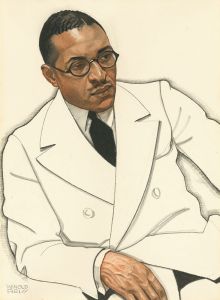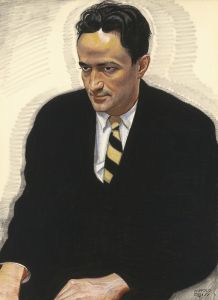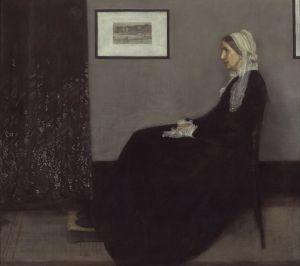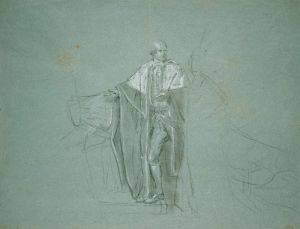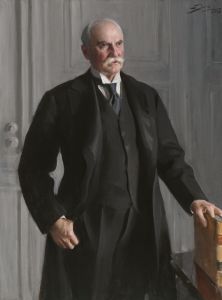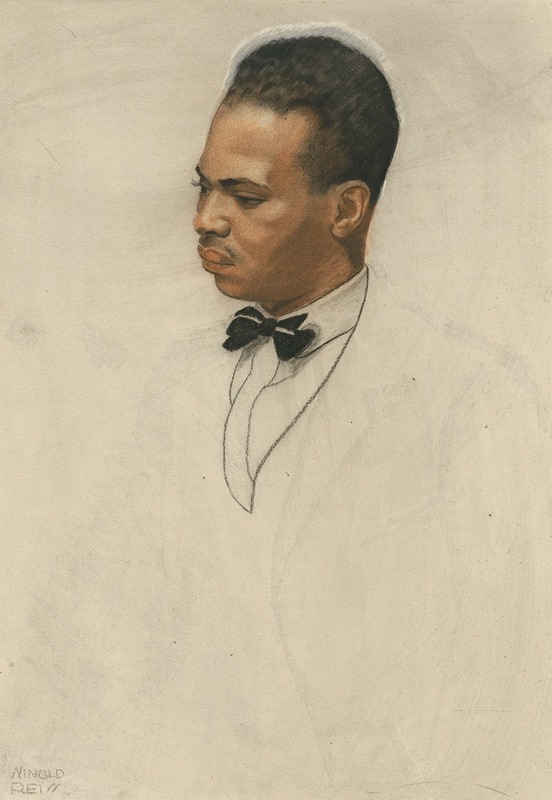
Countee Cullen
A hand-painted replica of Winold Reiss’s masterpiece Countee Cullen, meticulously crafted by professional artists to capture the true essence of the original. Each piece is created with museum-quality canvas and rare mineral pigments, carefully painted by experienced artists with delicate brushstrokes and rich, layered colors to perfectly recreate the texture of the original artwork. Unlike machine-printed reproductions, this hand-painted version brings the painting to life, infused with the artist’s emotions and skill in every stroke. Whether for personal collection or home decoration, it instantly elevates the artistic atmosphere of any space.
Winold Reiss was a German-American artist known for his portraits and illustrations, particularly those capturing the essence of the Harlem Renaissance. One of his notable works is the portrait of Countee Cullen, an influential African American poet during the Harlem Renaissance. This period, spanning the 1920s and 1930s, was a cultural revival of African American music, dance, art, fashion, literature, theater, and politics, centered in Harlem, New York City.
Reiss was born in Karlsruhe, Germany, in 1886 and immigrated to the United States in 1913. He was deeply influenced by his father, a landscape painter, and his education at the Royal Academy of Fine Arts in Munich. Reiss's work is characterized by its vibrant use of color and its focus on diverse subjects, often portraying Native Americans, African Americans, and other ethnic groups with dignity and respect.
Countee Cullen, born in 1903, emerged as one of the leading voices of the Harlem Renaissance. He was known for his formal style and his exploration of themes such as race, identity, and spirituality. Cullen's work often grappled with the complexities of African American life and sought to bridge the gap between black and white cultures in America. His poetry collections, such as "Color" (1925) and "Copper Sun" (1927), are celebrated for their lyrical beauty and profound social commentary.
The portrait of Countee Cullen by Winold Reiss is a significant piece of art that captures the essence of both the poet and the era. Reiss's ability to convey the intellectual and emotional depth of his subjects is evident in this work. The portrait is noted for its vivid colors and dynamic composition, which reflect the vibrancy and energy of the Harlem Renaissance. Reiss's portrayal of Cullen is not just a likeness but an interpretation of his character and his contributions to literature and culture.
Reiss's work, including his portrait of Cullen, played a crucial role in documenting and promoting the cultural achievements of African Americans during the Harlem Renaissance. His portraits were often featured in publications such as "The New Negro," an anthology edited by Alain Locke that showcased the work of African American writers, artists, and thinkers. Reiss's illustrations helped to bring the faces and stories of the Harlem Renaissance to a broader audience, fostering greater appreciation and understanding of this pivotal cultural movement.
The collaboration between Reiss and figures like Cullen highlights the interconnectedness of artists and intellectuals during the Harlem Renaissance. It was a time when visual art, literature, and music were intertwined, each influencing and inspiring the other. Reiss's portraits serve as a visual record of this dynamic period, capturing the individuals who shaped the cultural landscape of the time.
In summary, Winold Reiss's portrait of Countee Cullen is more than just an artistic representation; it is a historical document that reflects the spirit of the Harlem Renaissance. Through his art, Reiss celebrated the diversity and creativity of the era, and his work continues to be appreciated for its artistic merit and cultural significance.





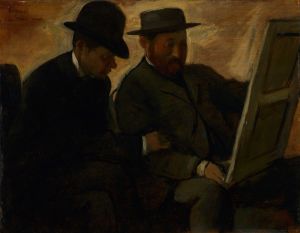
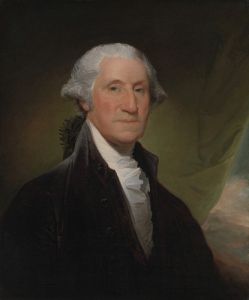

![Designs for unidentified restaurant interior, possibly Elysée restaurant, 1 East 56th St., New York, NY.] [Drawing of restaurant details](/imgs/249333/s/winold-reiss-designs-for-unidentified-restaurant-interior-possibly-elysee-restaurant-1-east-56th-st-new-york-ny-drawing-of-restaurant-details-5319cbfe.jpg)
![Interior perspective studies for Restaurant Crillon, 15 East 48th Street, New York, NY.] [Interior perspective study](/imgs/249376/s/winold-reiss-interior-perspective-studies-for-restaurant-crillon-15-east-48th-street-new-york-ny-interior-perspective-study-237ead1d.jpg)


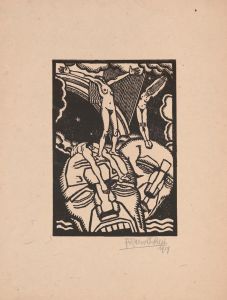
![Designs for theater with black-framed proscenium and boldly colored settings.] [Study for stage light wall decoration, possibly for Caf ̌Crillon](/imgs/249423/s/winold-reiss-designs-for-theater-with-blackframed-proscenium-and-boldly-colored-settings-study-for-stage-light-wall-decoration-possibly-for-caf-crillon-5f9976e0.jpg)
